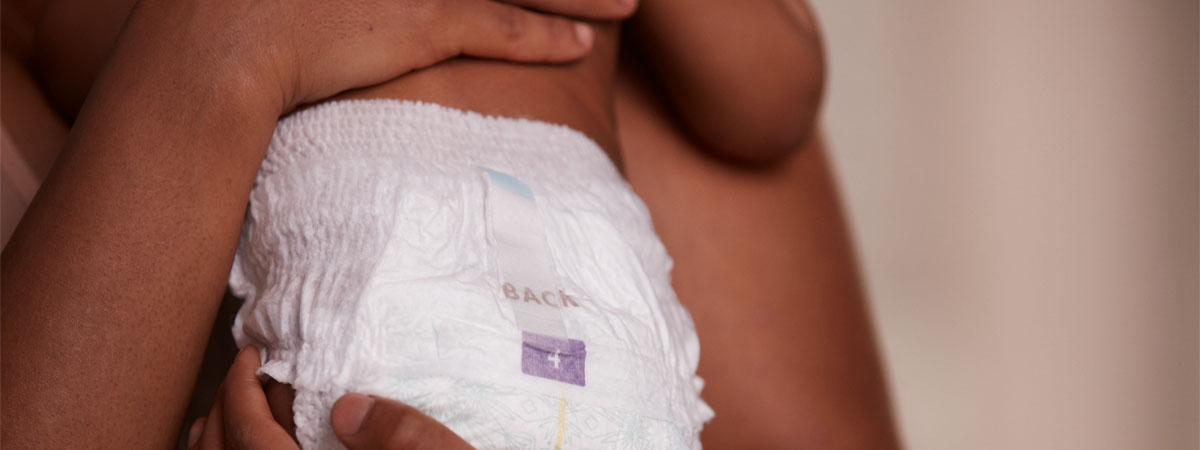Baby poo - what should it look like?
What colour is baby poo? What is the usual consistency of a baby’s poo and how often should a baby poo? New parents are often surprised by how easy it suddenly becomes to talk about another person’s poo.
This new interest in baby’s poo and gas that new parents often have can be difficult for the people around them to understand, especially if they don’t have children themselves. But the fact is that there is a reason for this new interest and why people like to talk about how often their baby poos or whether the baby poo in their nappy is green. Because what ends up in their nappy can say a lot about how your baby is feeling.
Meconium – a newborn’s first black poo
The very first poo may occur in the mother’s womb, in which case you will need to be monitored more closely during labour, but usually a baby’s first poo occurs within 24 hours of birth. This first poo is called meconium. It has a greenish-black colour and resembles tar in both appearance and consistency, but it has almost no smell. Since meconium is sticky, it can be a bit tricky to remove – when changing the nappy, try using some baby oil to make it easier. Pretty soon in the first week you will see the poo change colour, this is completely normal and a sign that your baby’s digestion and bowel movements have started.
Green or slimy poo
If your baby is breastfed, their stools will get gradually thinner and yellow-green with a slightly acidic smell, before turning into a relatively odourless poo that is similar in colour and texture to mustard. So it’s perfectly normal for breastfed babies to have quite loose poo. If your baby’s stool suddenly changes and becomes thinner than usual, perhaps even watery in consistency, it is probably diarrhoea – even small babies can get stomach bugs. Diarrhoea also tends to have a slightly different smell. If your baby gets a cold it’s common to see slimier poo than usual – which is perfectly normal. Formula-fed babies often have slightly firmer poo, which tends to have a stronger smell and a darker yellow-brown colour.
Then, when it’s time to start tasting solid food, you will see a change, regardless of whether the baby has been breastfed or formula fed so far, as the colour of the poo will gradually become darker and browner. You can read about this and much more in the Libero poo school.
How often should your baby poo?
In the first two months, babies poo frequently, sometimes during or right after each feed. Often it can be a real poo explosion (for all you parents who know what we’re talking about, we’re pleased to announce that Libero Touch is now available with a capture pocket to help prevent poo from leaking out and up your baby’s back). Babies who are fully breastfed are very rarely constipated – although it may seem that they have to push quite hard to poo. However, the frequency of pooing can vary quite a lot from day to day. Those on formula do not tend to poo quite as often as breastfed babies, and sometimes those on formula become constipated. If your newborn baby has as many as 3–4 days between poos, feel free to talk to your healthcare provider, whether the baby is breastfed or formula fed – or if you’re simply wondering what’s normal. You can always call your healthcare provider, they are there to support parents.
After a few months, babies tend to become a little more regular in their pooing habits, but there are also large variations between children. Because just like adults, babies and children have different toilet habits: anything from several times a day to once a week is normal.
White poo or bloody stools
Yellow and even green poo in an otherwise healthy baby is completely normal, as well as slightly more yellow-brown poo if the baby is on formula. However, white or grey-white poo in a baby can be a sign that bile – which normally gives the poo its colour – is not reaching the gut. It is rare but serious – if it happens, save the nappy and go straight to a Paediatric Emergency Department so that a doctor can examine the baby and check the stools. If you notice a streak of fresh blood in the poo, there is no need to worry, but if you continue to see some blood in the poo, it is important to check with a paediatrician or other medical professional. If there is a lot of blood or old blood in the stool you must always check right away!
Please note that all information above is based on Swedish recommendations.



